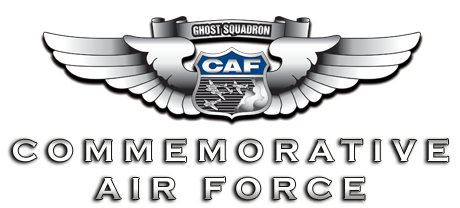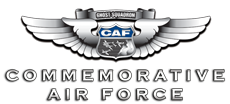L-17 Highland Lakes Squadron

Description:
Base:
Burnet, TX
Website:

| L-17 Specs | |
|---|---|
| Role | |
| Manufacturer | Ryan - North American Aviation |
| Introduced | 1946 |
| Produced | 1946-1949 |
| Power | Continental O-470-7 of 185 hp |
| Length | 27 ft 4 in |
| Height | 8 ft 7 in |
| Wingspan | 33 ft 5 in |
| Range | 700 miles |
Our aircraft, N444AC, was built as a civilian Navion A. The aircraft came off the Ryan assembly line in 1948. It differs from the military L-17B only in the location of some of the instruments (both versions flunk ergonomic instrument placement). It is owned by the Commemorative Air Force. The Highland Lakes Squadron obtained the aircraft in 1996. Its history prior to that time is currently being investigated.
At the end of WW-II North American Aviation resumed manufacturing civilian aircraft, and the NA-145 Navion, nicknamed "the poor man’s Mustang", was its first post-war product. It first flew in April 1946. The Army Air Forces ordered 83 military versions under the designation L-17A. It was procured 'off-the-shelf' from among all U.S. four-place aircraft with no special expenditure for a new design.
In the summer of 1947, the Ryan Aeronautical Co. acquired the design and manufacturing rights from North American. Shortly thereafter, the Air Force ordered 158 improved Navions from Ryan as L-17Bs, the first of which was delivered in November 1948. Five more were purchased in 1949 and by February of that year regular production ended. Later, 35 L-17As were converted to L-17Cs with improved brakes and more fuel capacity.
The L-17 ('L' for Liaison) was used by the military services for a variety of missions, including reconnaissance, light transport, courier duties, medical evacuation, rescue, and artillery spotting. Six even became target drones. A special L-17, the Model 72, was tested for the primary trainer roll by the Air Force and Navy. All L-17s were redesignated U-18s in 1962.
L-17s were used as a Forward Air Control (FAC) aircraft for a time during the Korean War. Rumors have L-17s, like the L-4 in WW-II, mounting bazookas or even 5 inch rockets on hardpoints. Eventually the L-17 was replaced by other aircraft in the FAC role, for example the T-6 Texan.
The L-17 then moved into a support role, hauling light cargo and personnel. Both General Douglas MacArthur and General Mathew Ridgeway had personal L-17s. At least one take-off from the 550-foot flight deck of an escort carrier is documented. One L-17 was supplied to the ROK Air Force, which used it for similar duties.
After the Korean War, most L-17s became squadron "hacks". They were then transferred to the Civil Air Patrol (CAP) or Air Force/Army Flying Clubs before entering civilian hands.

